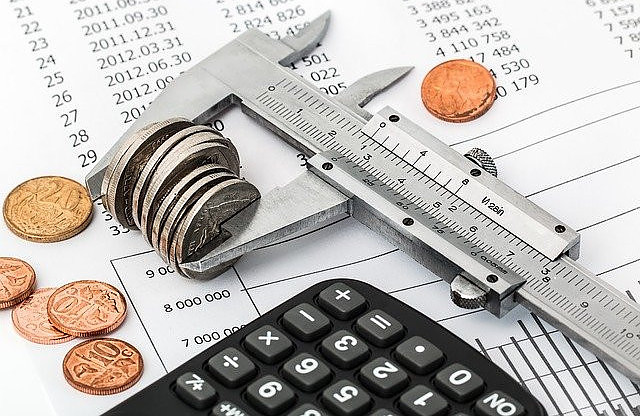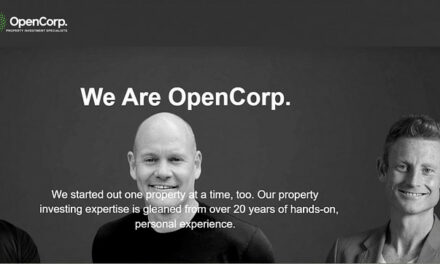This article will give a short overview of costs related to real estate. In particular, it will cover all holding costs in real estate investment and development. It’ll also differentiate holding cost and carrying cost as well as property investment and property development. All of these terms will be gone into detail a little later.
The tone of this article will be simple and understandable, so if you’re not particularly experienced with any of these topics, this is the article for you.
To shake up the water a bit, let me give you an idea of holding cost first. Don’t be alarmed, they’ll be better explanations as you read further in a structural manner.
Holding costs, or also called carrying costs of real estate investment, are reoccurring rental property expenses that the property owners must pay during the time they’re the property owner. Most commonly, the cost will occur (incur) at the end of the month.
Some examples of holding costs in real estate are the maintenance cost, the age of the property (depreciation cost), the geographical position of the property (e.g. rates and local council charges), proximity to water (e.g. water supply charges), and so on.
The highest holding cost in real estate, though, is property tax. They’re calculated by the value of the property and are collected by the local government, and are supposed to be used to build up the local community, such as to build libraries and schools or such.
Best to start this article by explaining to you the types of costs related to property…
Types of Cost Associated with Real Estate
To a novice, investing in property may sound like a great idea. It may be so; you might just find yourself in the real estate business. However, it’s important to take note of some common additional costs that aren’t always accounted for, yet should be, as they can burn quite a hole in your pocket if left unaccounted for.
- Brokerage or Agency costs
The financial dictionary defines brokerage as a real estate activity in which buyers and sellers are assisted in buying or selling their property. Essentially, that’s what brokerage is.
A broker is in charge of having the buyer and the seller meet and makes sure they’re both on the same page regarding the transaction. Both the seller and the buyer have to pay a certain percentage from the transaction to the broker, so this cost is good to keep in mind.
In Australia, this cost is referred to as agency cost or real estate agent cost. If your mortgage is funded through a broker, their charges/commissions are usually funded by the financial institution (i.e. bank).
- Search costs
Search costs include advertisements and promotion; publishing an ad for the property in a magazine or a newspaper, or nowadays online, can be quite costly when added up, so this expense is also prudent to keep in mind.
Remember, search cost is applicable when you are selling or as a vendor.
As a buyer, your legal representative (conveyancer) will need to run some searches on the property to confirm it is a legit sale, and that search also incurs a cost.
- Legal and administrative costs
These types of costs are connected to paperwork, which is necessary when handling a large amount of money that a property holds. For that reason, lawyers and attorneys (e.g. conveyancers) are hired, and they can be quite an expense.
It’s also important to bear in mind other administrative costs from utilities such as electricity and water bills that may not be a lot compared to other costs but can pile up to a great sum in the long-term.
- Statutory costs
Statutory costs refer to the small percentage the government tends to take whenever a property is sold.
In the UK, Australia, and some parts of the United States, stamp duty is levied on the transaction value, which means that for every $100, the government will get about $3 in order for the transaction to be legal.
In other countries, the whole transactions need to be done by the government, so the costs there may be ever heftier.
- Financing costs
As most transactions nowadays are done using borrowed money, the costs regarding the lender need to be counted in as well. Generally, they charge from 0.15% to 0.25% of the property value, which can be a hefty price to pay when you’re already borrowing money.
Now, let’s focus on holding cost and carrying cost.
What is Holding Cost? What is Carrying Cost?
In the introduction to the article, holding cost and carrying cost have been used as synonyms. In literature, they’re often used in that manner. Yet, there is a difference that might be beneficial to mention before the article progresses any further.
In finances, holding costs are costs that depend on ‘all the units’ of a certain ‘product’ you have in ‘storage’ and for how long they’ve been ‘laying there’. These can be supplies and materials, staff salaries, but also rent and insurance, or taxes depending on you own a ‘storage’.
You can calculate the holding cost by multiplying your average ‘inventory level’ by the ‘per-unit’ annual holding cost, in which you get the average inventory level by dividing the order quantity by 2.
Holding costs are also considered opportunity costs because the money from the ‘inventory’ has the ability to benefit the company in another way, for example, by investing it in new ‘product development.’
When you apply the same fundamentals to real estate, the holding cost is any cost resulting from owning that real estate. That’s a huge range as you can imagine.
On the other hand, carrying cost depends on the number of ‘units and the distances that each of them is carrying inside the storage or from supplier to storage’. However, when it’s come to real estate, there no much difference between the idea of holding cost and carrying cost.
In the continuation of the article, these two terms, holding cost and carrying cost, will be used as a synonym. In real estate, they are used like that in most of the literature available.
Types of Holding Costs in Real Estate
We tend to look at our properties sentimentally Because of our ‘humanly’ reasons, and like that, we tend to overlook some expenses.
Here are 6 of such holding costs that are commonly overlooked, and aren’t commonly considered when comparing the value of the property at the beginning and the end of a year.
- Loans
A mortgage payment (principal and interest) is probably the biggest cost factor that you must be kept in mind. While it can be seen as building up the equity in the house, but a portion will always go into paying interest.
And, besides the mortgage, some owners are taking loans to make their properties look more aesthetically pleasing, which will be a substantial long-term expense. Some of those softhearted touches are the worst investments you will ever make. So, be mindful.
Remember, loan cost does not end with principal and interest payments. Banks also charge annual service charges and package fees, which can be added hundreds of dollars. Always check with your bank on those additional charges of the finance product you are sticking with.
- Insurance
When buying a property, it’s important to secure it. When adding up the monthly insurance fees of today’s building and content insurance policies, they can turn out to be quite a hefty sum that you need to be taken into consideration. Remember, if you are in the real estate game, you must sufficiently insure your assets. There’s no way around it!
- Taxes
While every country has its own set of tax laws, these expenses are of great importance to mention. Typically, it’ll be calculated by the property’s value, and you’ll have to pay a certain percentage.
Taxes can be tricky on their own, but that’s largely out of your control to argue. However, if you think the property was overvalued by the council and resulted in a high tax bill, you should be able to challenge it with the help of a lawyer. However, this is something not commonly done in residential real estate.
So it might be prudent to do more research on tax laws in your area before making any decisions to purchase a property.
- Utilities
There are a couple of different ways of settling on a utility agreement that the landlords and the tenants need to agree on; the tenants pay all, or the tenants and the landlord split the bill, etc. Best to get some advice from your rental manager.
This is rather subjective, but still, a cost that’s rather important to think about.
- Service fees
These include picking up the garbage, maintaining the driveway and the nature around the property. Of course, the vicinity beyond your property boundary is mainly done by the government. However, any maintenance inside your property is a cost to you.
While your house is positioned in a neighborhood, these expenses will need to be continuously accounted for.
- Management fees
These include services like mowing the lawn, advertising the property for tenants and such. You won’t be able to do all of that on your own. You’ll have to hire someone, ideally an experienced rental manager.
Usually, property management fees are annually recurring and can be up to 5-10% of rental income.
We have previously covered this topic. However, it’s best to touch on the difference between property investment and development again.
Property Investment vs Property Development
An investment property is a property purchased for the sole reason of earning profit from it, later on, be it through rents, resale of the property, or both. This term doesn’t have to be only connected to real estate; it can be an investment
painting, coins, stamps, land, and others.
Typically, investment property can be classified into three types:
- residential, in which the investor rents a property out to a family to live at and earns a monthly income from rents;
- commercial, in which the investor rents space out for a shop, a café, or other businesses and earns a monthly income; and
- a mix of both, in which the single property is used to live in and lead a business, most commonly by having the business part on the ground floor and residential part on the upper floors.
Property development, or real estate development, is the process of buying land, and renovating it to make it a bigger value property, and like that, make income.
The developer adds value to the property, and from that, the developer can gain profit by selling it later on. Thought, this business also carries a lot of risks.
Holding Cost in Property Investment
Both of the terms have been defined already, so combining them shouldn’t be hard.
Thinking about the holding costs of property investment is important, as most of us would recklessly only focus on the expense of buying property instead of the long-term expenses afterwards.
Here are some.
- Property management fees
Instead of doing this alone, it’s possible to hire a management firm to cover all the details for you. Each decision comes with its own expenses, of course.
It’s also important to note that these fees are tax-deductible.
- Strata fees
More advanced buildings build as a part of a community with a lot of additional common features will require investors to pay a strata fee. These are paid directly to the landlord or the organization managing the strata.
The more features the property and strata community contains, the higher the strata fees.
- Maintenance fees
These fees are important to note especially if you’re investing in an older house, although some unpleasant surprises can occur with a villa as well.
These fees include getting rid of overgrown trees, property repair, giving the property a new feel with a new color, and such.
- Mortgage repayments
Loans have already been discussed as the most common holding cost of real estate. In this situation, it’s prudent to follow the rule of thumb, meaning properties with higher rental profits will record lower capital growth, and the other way around.
- Insurance
This is important in a money-consuming job such as the real estate business, as insurance can cover all of the possible losses in times of unluck, such as bad weather or fire, for example.
Holding Cost of Property Development
Furthermore, here’s a list of holding cost in property development. This term has also been defined earlier in the article, so combining the two shouldn’t pose a problem.
- Acquisition cost
First and foremost, there’s the cost of buying the property to develop together with all of the legal fees that come with it, such as stamp duty and council rates. They’re different across the world, so it’s prudent to do some research beforehand.
- Finance costs
It’s important to consider both the site purchase and development financing, which includes application, valuation and legal fees as well.
- Professional costs
These costs include the surveyors, architects and engineers working on the development project. These costs vary by the size of the property that’s being renovated or developed – for example, a multi-story building will require more than a family house.
- Development costs
These costs include everything necessary to transform the property into a marketable high-value end-product. Not only demolition fees, building materials and contractors are included, but also council charges, planning submission and building permit fees.
- Utility connection fees
Without power, water and sewerage, the property development won’t get far ahead. These little things are important to take note of too.
- Insurance
As stated before, insurance is an important expense to think about, as it helps to prevent the consequences of some unfortunate events, such as fire or unfriendly weather conditions. Contingency is also an important thing to think about, as some setbacks you couldn’t foresee will happen.
- Marketing and selling costs
Finally, to gain profit from the newly developed property, it has to be sold. And, in order to be sold, it has to be marketed. Marketing can be done through magazines and newspapers, or more commonly, online. Some expenses need to be accounted for there.
What You Can Do to Reduce Holding Costs – Tips and Tactics
Now that there’s been so much say about the holding costs, let’s talk about how these costs could potentially be cut down.
Firstly, marketing fees can easily be cut down by using the free apps online. Thankfully, we’re living in the 21 century, and everything is happening online, including sales and purchases.
Furthermore, suppose you’re only starting with the real estate business. In that case, there are some tax breaks you’re eligible for that you may haven’t even known about—for example, deductions, depreciation, or capital gains.
Taxes are different around the world, so make sure to conduct thorough research on this topic and make your life easier in the long run. Another long-run benefit would be working in an eco-friendly manner.
If you make some smart choices and decisions now, it can pay off heftily. Some of the eco-friendly include sustainable landscaping and regular maintenance to make your carbon footprint smaller.
Lastly, you can hire a cheaper workforce – and no, that doesn’t mean underpaid and under-qualified workers. You can hire interns and use automation tools, such as already mentioned social media. And, you can always do more work yourself.
Conclusion
To sum this article up, here are the four main definitions relevant to this article.
Holding costs are costs that depend on all the expenses resulting from holding property in your (or your business) name. If you didn’t invest in the correct profitable investment, the opportunity cost will be added to the holding cost, which essentially makes things worse for you.
Opportunity costs because the money you invested on the ‘investment’ has the ability to benefit you or your company in another way if you make better decisions before investing in a particular property.
An investment property is a property purchased for the sole reason of earning profit from it, later on, be it through rents, resale of the property, or both. There are three types: residential, commercial, and a mixture of both. Property development, or real estate development, is the process of buying land, and renovating it to make it a bigger value property, and like that, make income.
Holding or carrying costs come with both property investment and property development, all of which have been discussed in more detail in the corresponding sections in the article.





